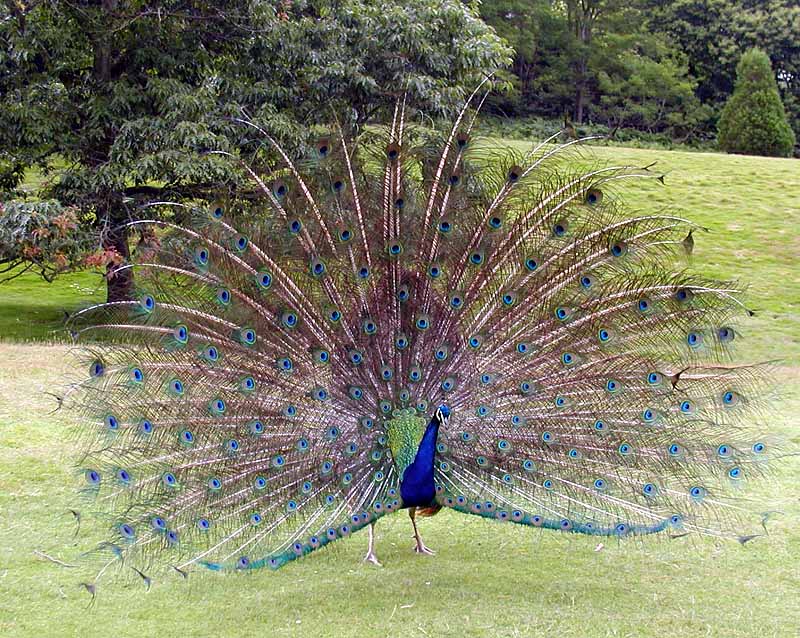Secondary sex characteristic

Secondary sex characteristics are traits that distinguish the two sexes of a species, but that are not directly part of the reproductive system. They are believed to be the product of sexual selection for traits which give an individual an advantage over its rivals in courtship, and aggressive interactions. They are distinguished from the primary sexual characteristics: the sex organs.
Well known secondary sex characteristics include facial hairs of male lions, and long feathers of peacock. In humans, the most visible are breasts of females and beard and moustache of males. Secondary sex characteristics include the tusks of sea lions, the plumage of many male birds, the chemical indicators of many insects, etc.
In humans
Sexual differentiation begins during gestation, when the gonads form. General habitus and shape of body and face, as well as sex hormone levels, are similar in prepubertal boys and girls. As puberty progresses and sex hormone levels rise, differences appear, though puberty causes some similar changes in male and female bodies.
Male levels of testosterone directly induce growth of the testicles and penis, and indirectly (via dihydrotestosterone (DHT)) the prostate. Estradiol and other hormones cause breasts to develop in females. However, fetal or neonatal androgens may modulate later breast development by reducing the capacity of breast tissue to respond to later estrogen.
In males, testosterone directly increases size and mass of muscles, vocal cords, and bones, deepening the voice, and changing the shape of the face and skeleton. Converted into DHT in the skin, it accelerates growth of androgen-responsive facial and body hair, but may slow and eventually stop the growth of head hair. Taller stature is largely a result of later puberty and slower epiphyseal fusion.
In females, breasts are a manifestation of higher levels of estrogen; estrogen also widens the pelvis and increases the amount of body fat in hips, thighs, buttocks, and breasts. Estrogen also induces growth of the uterus, proliferation of the endometrium, and menses.
In humans, secondary sex characteristics include:
- Male
- growth of body hair, including underarm, abdominal, chest, and pubic hair
- growth of facial hair
- enlargement of larynx and deepening of voice[1]
- increased stature; adult males taller than adult females, on average
- heavier skull and bone structure
- increased muscle mass and strength
- broadening of shoulders and chest; shoulders wider than hips[2]
- increased secretions of oil and sweat glands, often causing acne and body odor [3]
- coarsening of skin texture
- a prominent Adam's apple
- fat deposits mainly around the abdomen and waist
- higher waist to hip ratio than prepubescent or adult females or prepubescent males, on average
- on average, larger hands and feet than prepubescent or adult females or prepubescent males
- lower digit ratio, on average
- Female
- enlargement of breasts[4]
- growth of body hair, including underarm and pubic hair
- vaginal and uterine growth [5]
- decreased stature; adult females shorter stature than adult males, on average
- widening of hips[6]; lower waist to hip ratio than adult males, on average
- increased secretions of oil and sweat glands, often causing acne and body odor [7]
- changed distribution in weight and fat; more subcutaneous fat and fat deposits mainly around the buttocks, thighs and hips
- higher digit ratio, on average
See also
Notes
- ↑ Sexual reproduction
- ↑ Secondary Characteristics
- ↑ Sexual reproduction
- ↑ breasts - [1]
- ↑ [http://www.columbia.edu/itc/hs/pubhealth/modules/reproductiveHealth/anatomy.html/
- ↑ Hips widen as part of the female pubertal process. [2]
- ↑ Sexual reproduction
References
"Sexual Maturity." Technical Issues in Reproductive Health. Columbia University. May 2, 2008. <http://www.columbia.edu/itc/hs/pubhealth/modules/reproductiveHealth/anatomy.html>.
Steinhardt, A. "Sexual Reproduction." Hartnell College. May 2, 2008. <http://www.hartnell.edu/faculty/asteinhardt/>.
- http://www.columbia.edu/itc/hs/pubhealth/modules/reproductiveHealth/anatomy.html
- http://www.hartnell.edu/faculty/asteinhardt/
bg:Вторичен полов белег
cs:Sekundární pohlavní znaky
da:Kønskarakteristika
de:Geschlechtsmerkmal
lt:Antriniai lytiniai požymiai
nl:Secundaire geslachtskenmerken
no:Sekundær kjønnskarakter
sv:Sekundära könskarakteristika